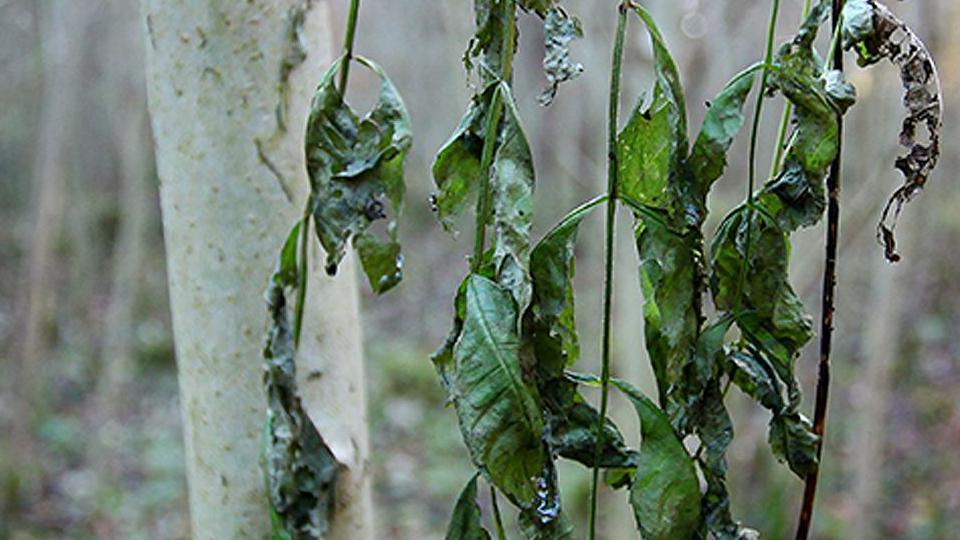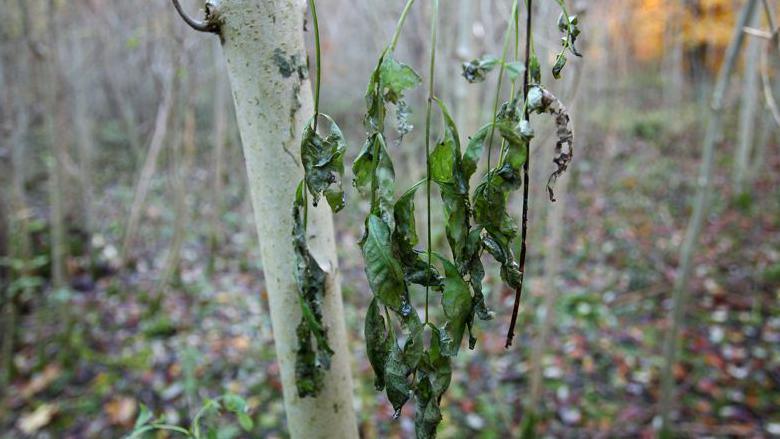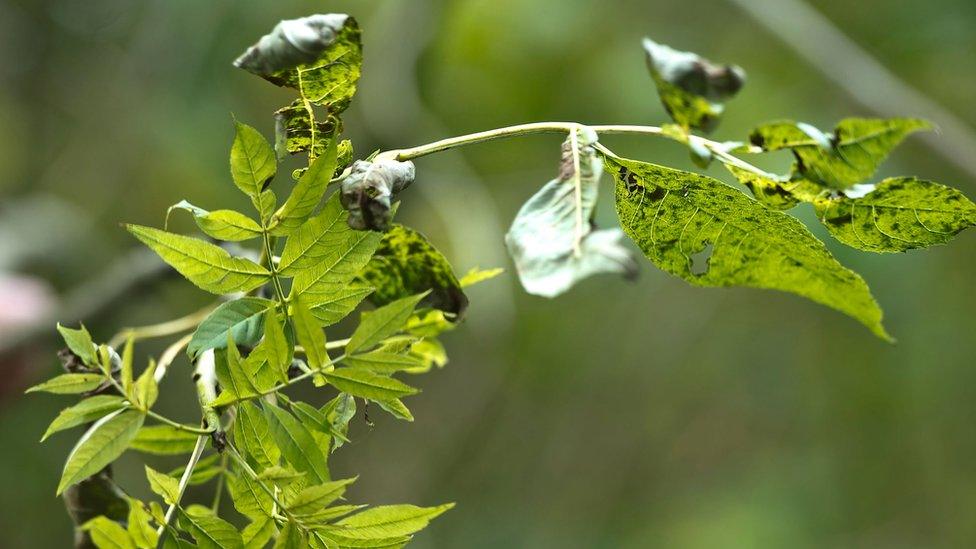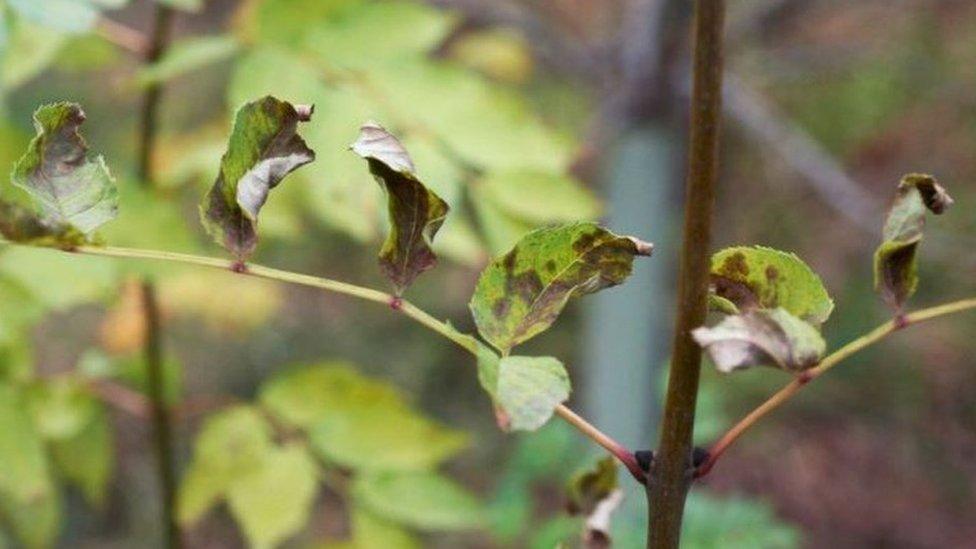More than 200 diseased trees to be felled

Ash dieback will kill up to 80% of ash trees across the UK, warns the Woodland Trust
- Published
More than 200 trees will have to be felled after being struck by a deadly fungal disease, a council has said.
Ribble Valley Borough Council said there was a "significant number" of ash trees dead, dying or in a dangerous condition through ash dieback in three "priority areas".
Affected trees are being removed at Crosshill and Salthill Quarry nature reserves in Clitheroe, Lancashire, and woodland in Whalley, the council said.
The Woodland Trust has predicted ash dieback will kill up to 80% of ash trees across the UK.
According to the conservation charity, ash dieback originated in eastern Asia and was introduced to Europe about 30 years ago.
It has "devastated" the European ash variety, it said.
'Three priority areas'
The council said about 165 dead or dangerous trees will be removed at Crosshill, 35 at Whalley Moor Community Woodland, and one at Salthill.
The work will cost about £35,000.
Stuart Hirst, chairman of Ribble Valley Borough Council’s community services committee, said: "We have been managing the impact of ash dieback for a few years on numerous sites across the borough and removing dangerous and dying trees where needed.
"But we have identified three priority areas in Clitheroe and Whalley, where a significant number of ash trees are dead, dying or in a dangerous condition, and urgent action is necessary in order to protect the public and property.
"Works at Salthill are largely complete, with only one tree left to be removed, which will require specialist equipment and sensitive handling of a power cable.
"Works at Crosshill and Whalley Moor will start this week by specialist tree contractors to minimise the impact on footpaths, biodiversity and infrastructure."
He said the authority had been liaising with the Lancashire Wildlife Trust, which managed Crosshill and Salthill, and the Friends of Whalley Moor Woodland, who were aware of the need for the works.
Mr Hirst said: "We are asking members of the public to bear with us during this difficult and sensitive work, which we hope to conclude as soon as possible."
He also added anyone with concerns about ash dieback in the Ribble Valley to contact the council’s countryside service.
Earlier this year, Blackburn with Darwen Council bosses revealed plans to plant 30,000 new trees, mainly of native varieties, to help replace those lost from the disease.
What is ash dieback?
According to the Woodland Trust, external, ash dieback is a fungus that originated in Asia and can affect ash trees of all ages.
In winter, the fungus lives in leaf litter on the ground, particularly on ash leaf stalks.
Between July and October it produces small white fruiting bodies which release spores that travel tens of miles in the wind, landing on leaves.
The fungus penetrates the leaf, and then grows inside the tree, eventually blocking the tree's water supply, causing it to die.
Eventually, repeated infections of the fungus will kill the tree.
While it does not cause much damage on its native hosts of the Manchurian ash and the Chinese ash, its introduction to Europe about 30 years ago has had severe consequences because the European ash species did not evolve with the fungus and therefore has no natural defence against it.
Listen to the best of BBC Radio Lancashire on Sounds and follow BBC Lancashire on Facebook, external, X, external and Instagram, external. You can also send story ideas to northwest.newsonline@bbc.co.uk, external and via Whatsapp to 0808 100 2230.
Related topics
- Published8 April 2024

- Published5 December 2018

- Published24 November 2021
